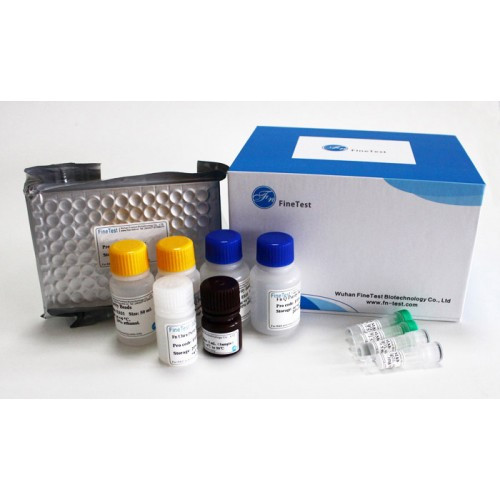Product Description
Recombinant Human Prosaposin (PSAP), partial is available at Gentaur for Next week Delivery.
Gene Name: PSAP
Alternative Names : Proactivator polypeptide
Expression Region : 311-391aa
AA Sequence : SDVYCEVCEFLVKEVTKLIDNNKTEKEILDAFDKMCSKLPKSLSEECQEVVDTYGSSILSILLEEVSPELVCSMLHLCSGT
Sequence Info : Partial
Tag Info : N-terminal 6xHis-tagged
Theoretical MW : 11.1 kDa
Storage Buffer : Tris/PBS-based buffer, 5%-50% glycerol. If the delivery form is lyophilized powder, the buffer before lyophilization is Tris/PBS-based buffer, 6% Trehalose, pH 8.0.
Endotoxin Level : Not tested-
Biological Activity : Not tested
Storage : Short term: -20°C; Long term: -80°C. Minimize freeze and thaw cycles.
Research Area : Signal Transduction
Restriction : For Research Use Only. Not for use in diagnostic procedures, drug use, or for administration to humans or animals.
Relevance : Saposin-A and saposin-C stimulate the hydrolysis of glucosylceramide by beta-glucosylceramidase and galactosylceramide by beta-galactosylceramidase. Saposin-C apparently acts by combining with the enzyme and acidic lipid to form an activated complex, rather than by solubilizing the substrate. Saposin-B stimulates the hydrolysis of galacto-cerebroside sulfate by arylsulfatase A, GM1 gangliosides by beta-galactosidase and globotriaosylceramide by alpha-galactosidase A. Saposin-B forms a solubilizing complex with the substrates of the sphingolipid hydrolases. Saposin-D is a specific sphingomyelin phosphodiesterase activator. Prosaposin: Behaves as a myelinotrophic and neurotrophic factor, these effects are mediated by its G-protein-coupled receptors, GPR37 and GPR37L1, undergoing ligand-mediated internalization followed by ERK phosphorylation signaling. Saposins are specific low-molecular mass non-enzymic proteins, they participate in the lysosomal degradation of sphingolipids, which takes place by the sequential action of specific hydrolases.
Function : Saposin-A and saposin-C stimulate the hydrolysis of glucosylceramide by beta-glucosylceramidase (EC 3.2.1.45) and galactosylceramide by beta-galactosylceramidase (EC 3.2.1.46). Saposin-C apparently acts by combining with the enzyme and acidic lipid to form an activated complex, rather than by solubilizing the substrate.; FUNCTION
Involvement in disease : Combined saposin deficiency (CSAPD); Leukodystrophy metachromatic due to saposin-B deficiency (MLD-SAPB); Gaucher disease, atypical, due to saposin C deficiency (AGD); Krabbe disease, atypical, due to saposin A deficiency (AKRD)
Subcellular location : Lysosome, SUBCELLULAR LOCATION: Prosaposin: Secreted
Protein Families :
Tissue Specificity :
Paythway :
Uniprot ID : P07602
 Euro
Euro
 British Pound
British Pound
 US Dollar
US Dollar








